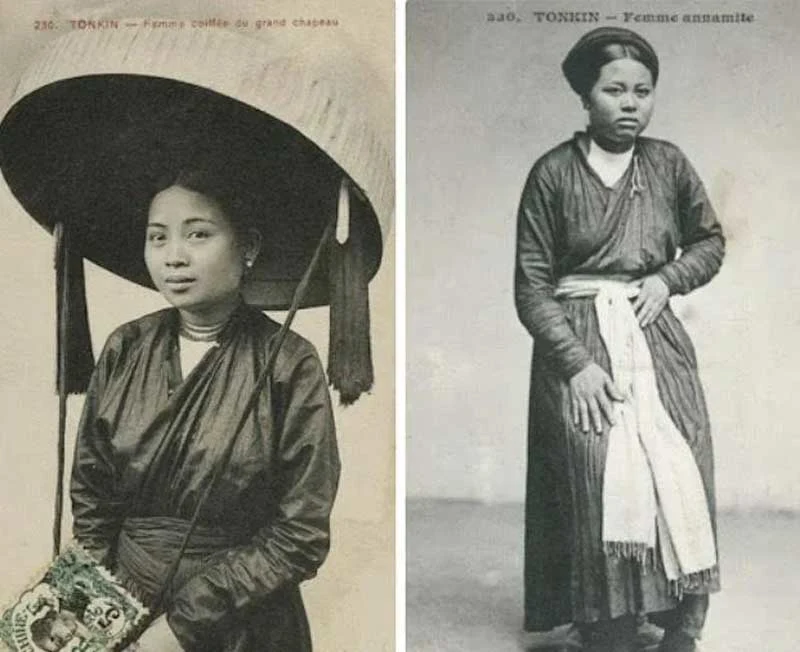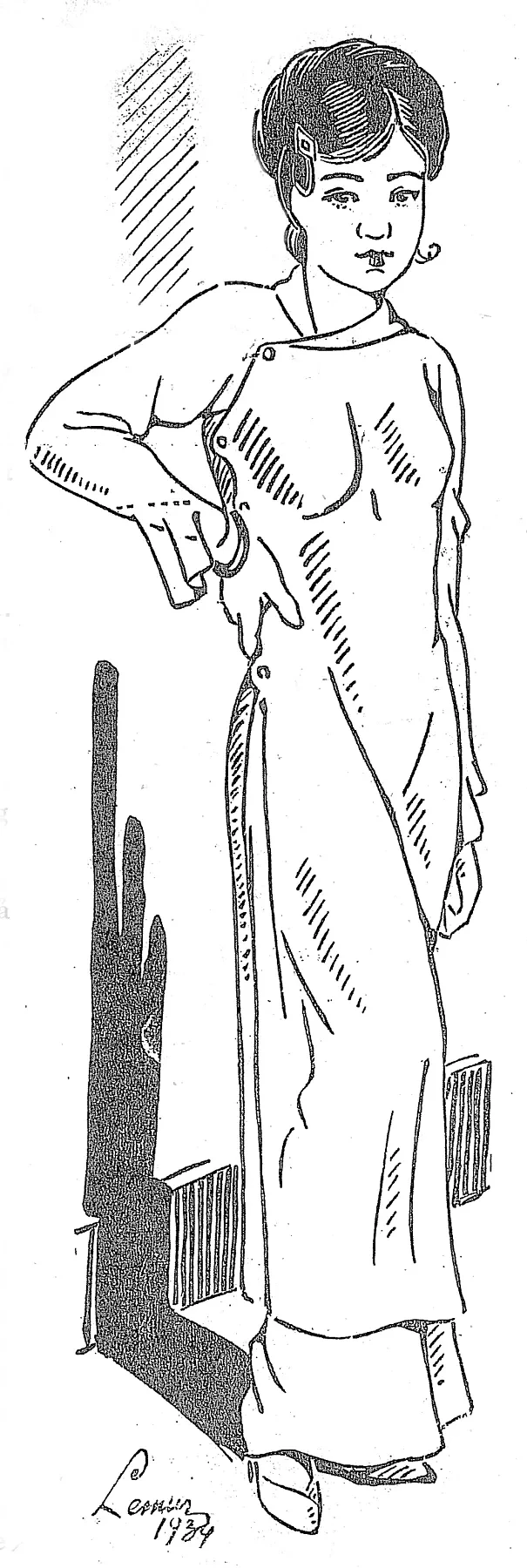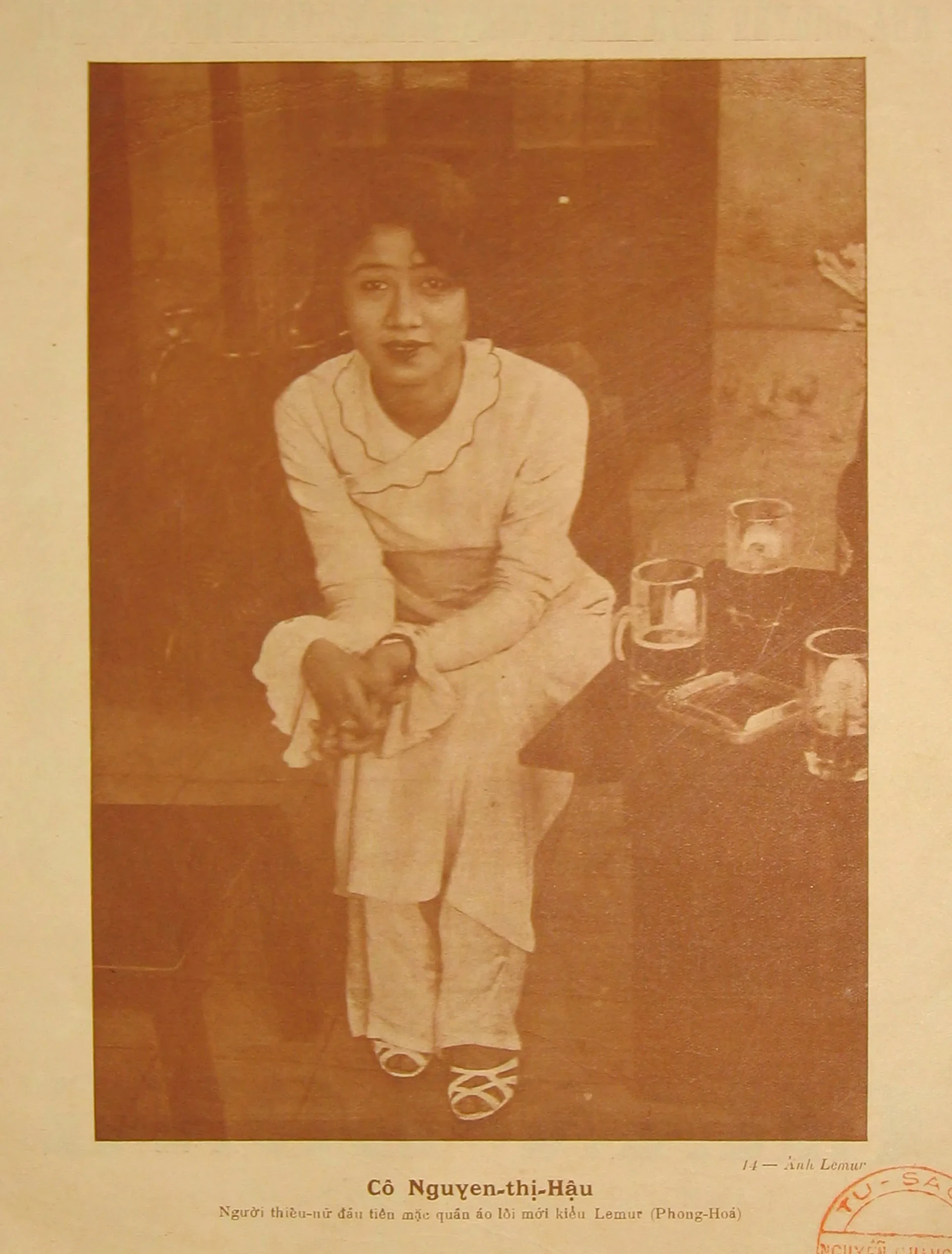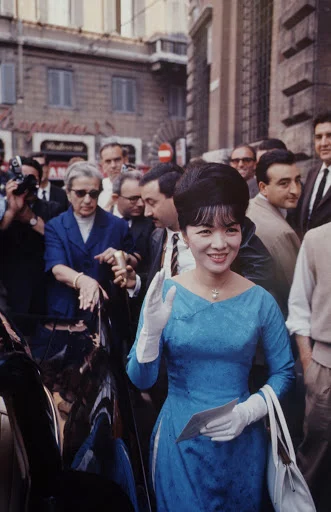
History of the Áo Dài
Luke D. • 3/17/2025
How a national uniform became a symbol of national pride and cultural identity
The áo dài (pronounced 'ow yai' in the south but 'ow zai' in the north) is Vietnam’s national dress beloved by all genders but most commonly worn by women. The áo dài is a two-piece garment consisting of a full-length split tunic made of fabric, which is typically worn over a trouser. It is a staple at formal events, such as weddings and Lunar New Year celebrations. You’ll also find it worn by students and office workers.
Traditionally, colors and patterns carry meaning indicating the wearer's age and status. Young girls wear pure white, fully lined outfits, symbolizing their innocence. Unmarried women lean toward pastels, and married women opt for rich colors, usually over white or black pants. For men, the áo dài is generally looser with less pattern variation, typically reserved for special occasions or weddings rather than everyday wear.
At weddings, brides traditionally wear red and gold áo dài, symbolizing happiness, luck, and prosperity, though a wider range of colors has grown popular in modern years. Bridesmaids, on the other hand, wear áo dài in vibrant colors like yellow, blue, or pink either to complement the bride’s outfit or stand out on their own. With so many colors and fun designs, the áo dài gives brides the perfect opportunity to showcase their personal style, all while staying true to tradition.
The Origins of the Áo Dài
The áo dài originated in 1744 when Lord Vu Vuong of the Nguyen Dynasty had both men and women wear trousers with a buttoned-down gown. In 1930, Hanoi artist Cát Tường, also known as Le Mur, designed the modern áo dài, which took inspiration from original traditional Vietnamese dress, áo ngũ thân, and Paris fashion. The dress grew in popularity through the decades. The artists of Tự Lực văn đoàn ("Self-Reliant Literary Group") promoted the dress to be the national Vietnamese dress. The newspaper Today featured the dress worn by model Nguyễn Thị Hậu in January 1935, and in 1934, painter Lê Phô became best known for his paintings of áo dài.



In the 1950s, Saigon designers tightened the fit of the áo dài to create the version commonly seen today. Trần Kim of Thiết Lập Tailors and Dũng of Dũng Tailors created a dress with raglan sleeves and a diagonal seam running from the collar to the underarm. Madame Nhu, the first lady of South Vietnam, popularized a collarless version beginning in 1958.

With the popularity of áo dài hitting its peak between 1960 and 1975, multiple versions of the áo dài were produced. The áo dài hippy, introduced in 1968, was designed with bright colors and mixed patterns to follow the Western popularized trends, and the áo dài mini was intended for more informal, practical usage, where the slits reached the waists and the panels only reached above the knees. The most modern version of the áo dài, known as the áo dài cách tân, is much shorter and has a more practical design.

The Modern Áo Dài and the Vietnamese Diaspora
The áo dài has also grown in popularity with the diaspora, including among Vietnamese-American women. Through the áo dài, Vietnamese-American women can relate to their femininity on their own terms, and in the context of their own cultural heritage. Vietnamese-American fashion designers express their artistic creativity through their own renderings of the áo dài, often featuring ornate designs. Some women choose to wear the áo dài for their weddings, customizing it with their own personal accessories. Wearing the áo dài has stood as a sacred tradition passed down by older female relatives to their daughters, granddaughters and great granddaughters, and as such, serves as a cultural repository of Vietnamese heritage, passed through women of the family. Both in Vietnam and with the Vietnamese diaspora across the globe, the áo dài carries profound meaning as a celebration and reminder of Vietnamese culture and national pride.
References
1. https://en.wikipedia.org/wiki/%C3%81o_d%C3%A0i
2. http://www.thingsasian.com/stories-photos/1083
3. http://www.aodai4u.com/aboutaodai.html
5. https://dvan.org/2022/06/a-historical-exploration-of-the-female-ao-dai/
Explore More Resources for the Asian Diaspora
We're excited to bring you blog posts that highlight the richness of the Asian Diaspora. We aim to create a space where you can find inspiration, tips, and stories that resonate with your unique experiences.
If you're in search of a makeup artist for your own wedding, we also have a directory of talented makeup artists who are experienced with Asian features. We hope it makes your wedding planning journey a little easier!
Find a Makeup Artist
